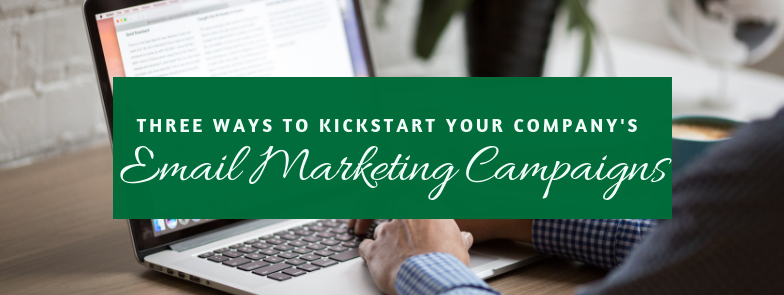Three Ways To Kickstart Your Company’s Email Marketing Campaigns

For more than a decade, business prognosticators have been predicting the death of email, and perhaps it will happen someday — but not yet. Platforms such as social media and texting have taken a bite out of email, especially within work teams where people understand that communication is fragmented. However, while everyone is looking at the shiny new toys, there’s something that savvy business leaders and marketing teams realize: Email marketing to prospects and customers remains one of the best ways to grow and develop a business.
As the CEO of a company that provides email marketing services, I know email still plays a vital role in effective marketing, especially when it’s coupled with other platforms, such as social media. Even though most people are inundated with emails daily, an effective email can still catch someone’s attention. The fact of the matter is that it’s tough to match the breadth of email availability. Globally, Statista data (paywall) shows there were about 5.24 billion active email accounts in 2018, and 281.1 billion emails (paywall) were sent each day.
Drip Campaign Success
One of the best email marketing formulas, which I’ve found performs exceptionally well, is the drip campaign. Drip campaigns, also known as drip marketing, are a series of automated emails. An initial email is sent, and follow-ups are scheduled to follow automatically based on the preplanned number of days or triggers. For instance, this could be based on when a person completes a call to action, such as requesting more information or signing up for a webinar.
When automated drip campaigns are done well, they can help convert prospects into more qualified leads for your sales group. Drip marketing assists marketers in moving prospects through the sales funnel more quickly, provides sales teams with “warm” leads and rewards people with exclusive offers and incentives.
Challenges With Email Marketing
Even though email marketing — done well — can work, some teams end up with a hit-or-miss strategy and do a little bit of everything because they get frustrated with the challenges of email marketing, and they believe that social media is the best approach in today’s world. Additionally, email open rates can be low, especially if the emails are not targeted well. Other times, there may be limited data and information on an email’s performance because the company lacked the foresight to select robust email platforms and tools. Lack of proper staffing can also impact successful email marketing campaigns because no one is accountable and responsible for a comprehensive email marketing effort. Still, email marketing is an excellent marketing tool when it’s done well.
Email is still a powerful tool. By relying exclusively on social media, as some companies do, there’s a risk that audiences won’t see what you’re trying to communicate due to the continual changes to social media algorithms. Organic reach may be throttled; and depending on the number of fans you have on your page, your efforts may or may not be as successful as you expect. Therefore, email remains an excellent marketing opportunity that you can use to complement your social media and other marketing efforts.
Our team uses three strategies in our emails to make sure they are as successful as possible when they’re sent and resonate with our prospect leads and our past and present customers.
• Know your audience. Our team sends tens of thousands of emails each month to different audiences, and we do it because email is a top tool for communication. Something we work on is understanding our target audience. If we know something that’s happening in someone’s life or an entire group’s lives (such as birthdays and industry conferences) we make it a point to mention it so we don’t miss an opportunity to show our appreciation. We also share what’s happening in the industry and any insights we’ve discovered that we think would benefit those who receive our emails. Showing appreciation and sharing valuable information, like trends and ideas in your industry, can help engage and build relationships with people with whom you are communicating.
• The subject is everything. It doesn’t matter how good your email copy is if you don’t get people to open your emails in the first place. The subject line is probably the most critical part of an email — along with a call to action — and you have to give it thought. One tip about subject lines is to drive urgency, but stay away from spam words such as “free.” I’ve found that the best subject lines are those that have approximately 50 to 60 characters total. Remember, many people are now reading emails on mobile devices or tablets. If a subject line is too long and they don’t get the message with a quick scan, they may never open the email, so its content becomes irrelevant by default.
• Email is a team effort. Sophisticated companies understand that providing an exceptional customer experience is a competitive advantage in today’s world. Email is a company-wide effort, which can also provide industry leadership for a company. Therefore, when you’re thinking about email content, an essential element for your marketing team is for them to understand how customers feel and what they think about your product or service. Your marketing group can gain valuable insights by having ongoing discussions with your sales or account services teams, for instance. When they know what’s happening across the company, which you can encourage in company-wide meetings or internal reporting processes, your marketing team can better provide relevant email substance in communications with your audience.
If your company has given email marketing short shrift, you should reconsider it. There is just no tool or platform yet that has the rate of conversations that email has had up to this point for me. Social media is great, but if you’re looking for performance, email is still it — and it’s most certainly very much alive.
